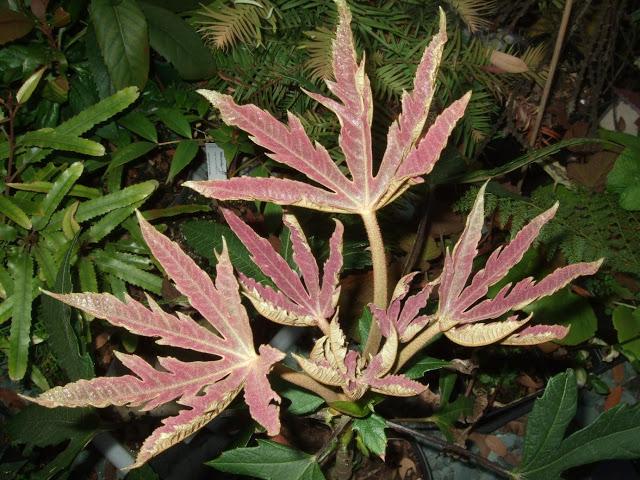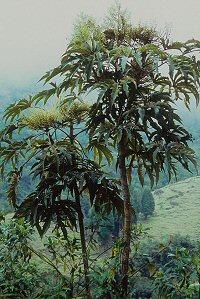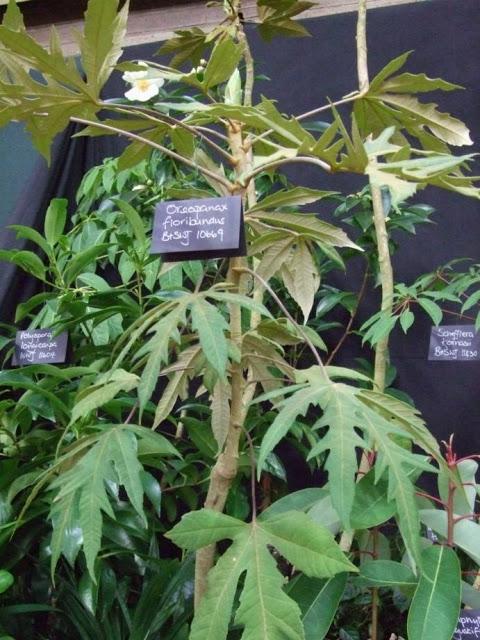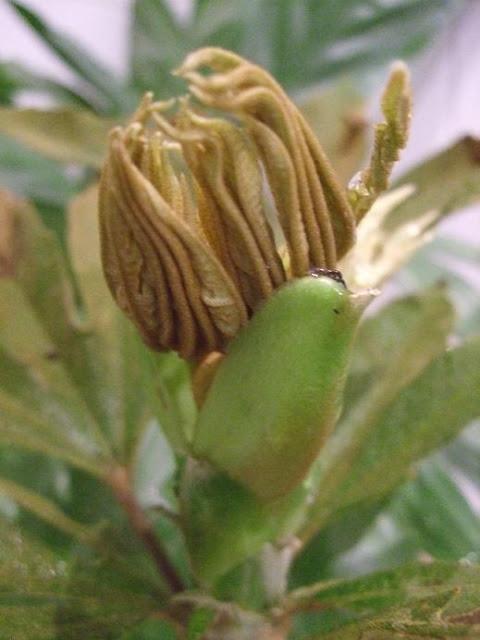A member of the Araliaceae family, it bears many of the classic traits of this family, which I must confess we have a great fondness of, having quite a number of other Aralieaceae in the garden.

Attractive purple new flush of Oreopanax floribundus

As you can see from the photo (left) from Crug's website, it has a very exotic and interesting shape and form, looking from a distance very much like a Schefflera.
We had first seen this plant in person at the RHS London Plant and Design Show held back in February at the RHS Halls in London, although we were aware that Crug would have them for sale prior to that. As you can see from the plant on the stand below it has a lovely form and has kept the interesting leaf shape so far. Sometimes the younger leaves on other Araliaceae have a different shape to the much older ones on the same plant, or younger plants have a different leaf shape that gradually changes in appearance into something that looks totally different altogether as the plant itself matures.

Part of Crug Farms Display at the RHS London Plant and Design Show
Our plant is still on the small side and as it's pretty much untested outside yet we have opted to keep it in a pot and moved it to a warmer spot for winter. I think we will wait before testing it outside for winter until its been trialled by a few more people. At the moment there is not much information available on line, probably down to it not being easily available in the UK until Crug released plants recently.
Our Oreopanax floribundus is now flushing.
Our plant has, however, decided that now would be a good time to push out a new flush of leaves. I would have preferred that it had not done this until the spring, but it clearly decided to do this now. It wasn't the warm conditions that promoted this as it was already flushing a new set of leaves whilst still outside with the cooler temperatures, prior to being brought into a warmer spot.I suppose this is already an indication of its hardiness....
Gaz

